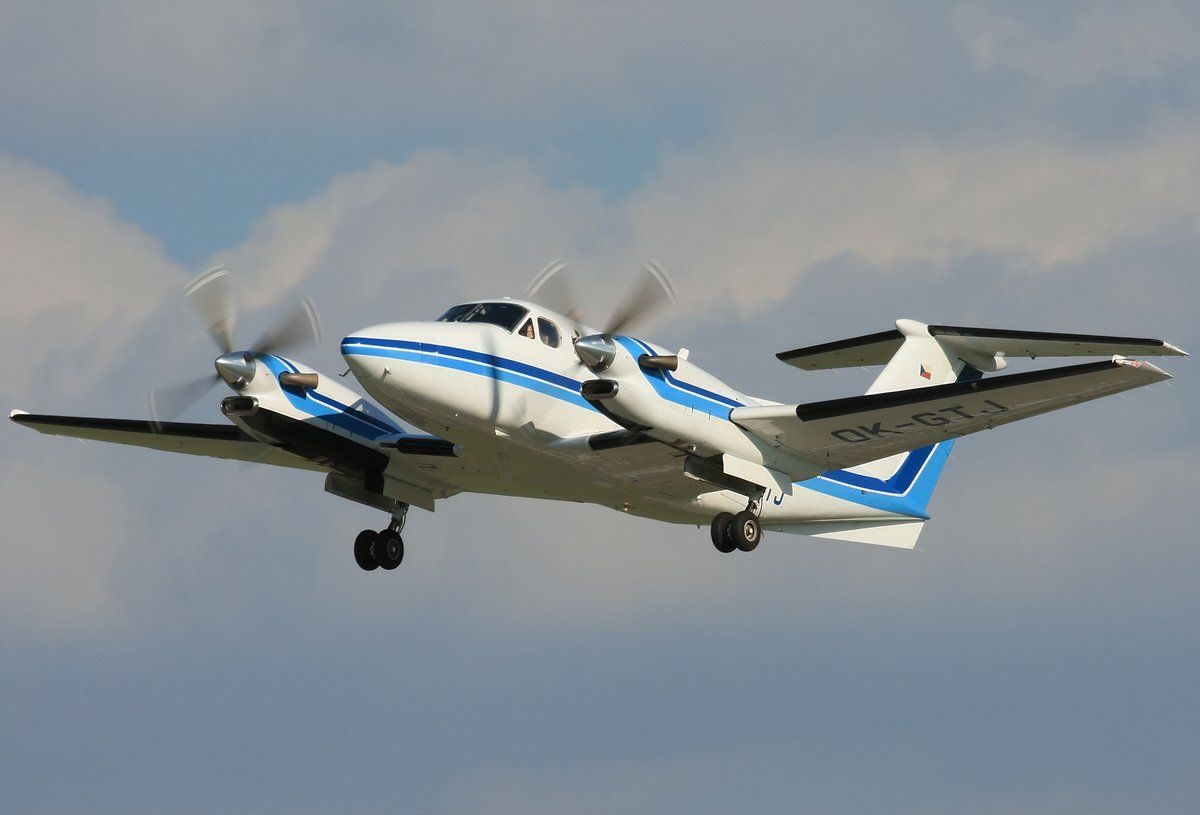The Beechcraft King Air 90 is an iconic aircraft that has left a significant mark on the aviation industry. Introduced in the early 1960s, the King Air 90 became the foundation for the entire King Air family, which has become synonymous with performance, reliability, and versatility. Today, we’ll explore the history, key features, and lasting impact of the Beechcraft King Air 90, taking a deep dive into why this aircraft continues to be a cornerstone of general aviation.
History and development According to King Air Nation , the story of the Beechcraft King Air 90 began in the early 1960s when Beechcraft sought to develop a pressurized twin-engine turboprop that would appeal to both business and private flyers. The King Air 90 was officially introduced in 1964, marking a new era in aviation. It was based on the successful Queen Air model but incorporated turboprop engines, which offered better performance and efficiency compared to piston engines.

The Beechcraft King Air series proves to be among the most versatile aircraft in aviation. The King Air 90 was the first of its kind, providing a pressurized cabin, which allowed it to fly at higher altitudes and offer a smoother ride than its competitors. This innovation made the aircraft an instant success, quickly becoming a favorite among corporate fleets, charter operators, and private owners.
Over the years, the King Air 90 saw numerous upgrades and variations, solidifying its place as a versatile and reliable aircraft. Key features of the King Air 90 The King Air 90's design was revolutionary for its time, offering a combination of performance, comfort, and versatility that was unmatched in the market, per the Aircraft Owners and Pilots Association . Some of the King Air 90's key features include: Key Feature Details Turboprop engines Powered by Pratt & Whitney PT6A engines, the King Air 90 delivers excellent performance and reliability.
The turboprop engines allow the aircraft to operate efficiently at higher altitudes, providing better fuel economy and range. Pressurized cabin The introduction of a pressurized cabin was a game-changer, enabling the King Air 90 to fly at altitudes up to 25,000 feet. This feature not only improved passenger comfort but also reduced the time spent in turbulence, leading to smoother flights.
Versatility The King Air 90's design allows it to serve a wide range of missions, from corporate transport to air ambulance services. Its ability to operate from short runways and in various weather conditions makes it a popular choice for operators worldwide. Cabin comfort The King Air 90 was designed with passenger comfort in mind, featuring a spacious cabin with executive seating arrangements.
The aircraft can accommodate up to seven passengers, making it ideal for small groups or business travel. Variants and upgrades Over the years, the King Air 90 underwent several upgrades and variations, each improving upon the original design. Some of the notable variants of the King Air 90 include: King Air A90: Introduced in 1966, the A90 featured more powerful engines and improved performance.
King Air B90: Released in 1968, the B90 included further enhancements to the engines and avionics, making it a more capable aircraft. King Air C90: The C90 variant, introduced in 1971, became one of the most popular versions of the King Air 90. It featured a higher gross weight and an improved pressurization system, allowing for better performance and comfort.
King Air C90A/B/GTi: Later models, including the C90A, C90B, and C90GTi, introduced advanced avionics, upgraded engines, and other refinements that kept the aircraft competitive in the market. King Airs have been used by governments and militaries around the world. The legacy of a king The Beechcraft King Air 90's legacy is undeniable, as it laid the foundation for the entire King Air family, which remains in production to this day.
The King Air series has become one of the most successful turboprop lines in history, with thousands of units produced and operated worldwide. The King Air 90's success can be attributed to its combination of performance, reliability, and versatility. It proved that turboprop aircraft could offer the benefits of jet-like performance with the efficiency and cost-effectiveness of propeller-driven aircraft.
This made the King Air 90 a preferred choice for operators who needed a dependable and adaptable aircraft. While no longer in production, the King Air 90's impact on the aviation industry continues to be felt. Its success paved the way for future generations of King Air aircraft, including the larger and more advanced King Air 260 , 360, and 350ER models, per Textron Aviation .
These aircraft continue to serve a wide range of missions, from corporate travel to military and government operations. Not as expensive as you think? The King Air 90 also set the standard for future turboprop designs, influencing the development of other successful aircraft in the general aviation market. Its legacy lives on in the continued popularity of turboprop aircraft, which remain a vital part of the aviation landscape.
The verdict The Beechcraft King Air 90 was more than just an aircraft; it was a breakthrough in aviation technology and design. Its introduction marked the beginning of a new era in general aviation, where turboprop aircraft became a viable and popular option for a wide range of missions. The King Air 90's combination of performance, comfort, and versatility made it a favorite among operators, and its legacy continues to influence the aviation industry today.
And as we look back on the history and achievements of the King Air 90, it is clear that this aircraft has indeed played a pivotal role in shaping the future of aviation..



















